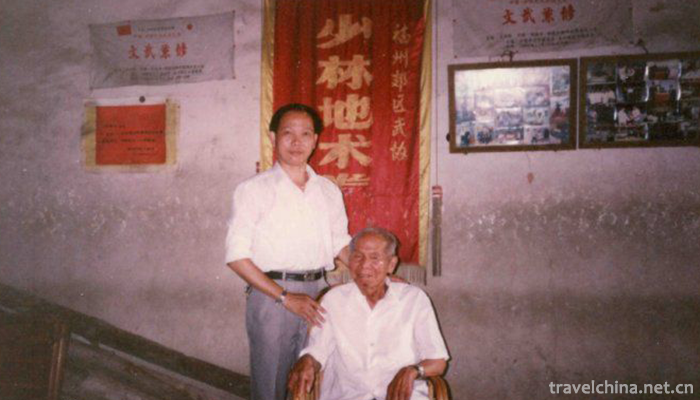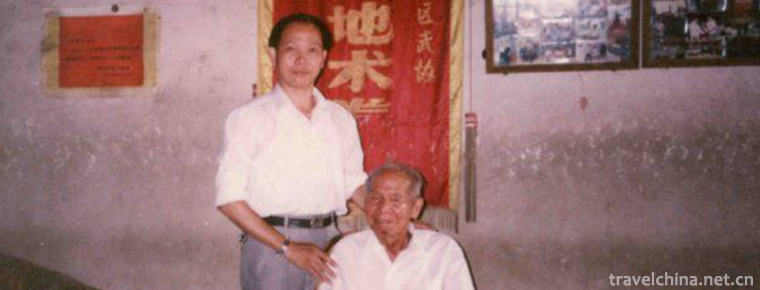Di Shu boxing
Di Shu boxing
Gejiquan is one of the rare traditional types of boxing in southern China, also known as "Gejiu Dog Method", "Dilong Quan" or "Dili Quan". It is commonly known as "Dog Quan" among the people. It has a long history. It belongs to the martial arts and belongs to the sect because of its origin in temples and temples. It also belongs to the Nanquan system because it is located in central Fujian, south of the Yangtze River. Furthermore, Gejiquan imitates the evolution of dog fighting. Therefore, it also has the characteristics of bionic hieroglyphic boxing. The unique ground skills and binding skills of geotechnical boxing are the soul of geotechnical boxing, its only basis for making it different from other boxing.
On May 23, 2011, Gejiquan was approved by the State Council to be listed in the third batch of national intangible cultural heritage.
History
.
Legend has it that in the late Ming and early Qing Dynasty, there was a White Lotus Temple opposite Nanshaolin Temple in Fujian Province. Legend has it that nuns in Nanshaolin Temple were created by nuns in Anzhong in April. At that time nuns in Anzhong nurses were nurses'body-building skills, and their skills were not passed down. The fist was based on the shortcomings of women's small stature and physical strength, which could not be counterbalanced with men, and observed the fighting movements imitating dogs, rolling and tumbling, agile and changeable, fast and fierce, alert and sensitive In the early Qing Dynasty, because Nanshaolin Temple and Bailian Temple participated in anti-Qing activities to restore the Ming Dynasty, they were ordered by the Qing government to burn temples and kill monks and nuns. In April, Shenni was relocated to Chenjia, Yongchun County, Fujian Province, to take refuge in their families. In April, Shenni felt his favor and taught Gejiquan to Chen Biao, the son of Lao Tai Li. Chen Biao, after ten years of hard practice day and night, was proficient in this skill. He regarded it as a secret skill of Wulin. He only passed it on to his sons and daughters.
In the early years of the Republic of China, Chen A-yin was introduced to Chen A-yin, who killed local villains and fled to Chenyi Jiujia in Singapore because of Chen's unequal fighting. Teacher Chen A-yin felt his support and taught Chen Yi-jiu as much as he could. Teacher Chen Yi-jiu loved martial arts at an early age and learned Thai boxing, drunken boxing and Dragon monkey boxing. After Chen A-yin's biography, he devoted himself to studying dog boxing, which was more sophisticated and comprehensive, and was quite popular in Southeast Asia. Famous, known as "Nine Teachers with Iron Feet" and "Nine Divine Legs", he was the president of Singapore Wushu Association. Mr. Chen Yijiu returned to China in 1942 and settled in Fuzhou.


-
1.Detian waterfall
Detian Waterfall is located in Detian Village, Shuolong Town, Daxin County, Chongzuo City, Guangxi Zhuang Autonomous Region. It is located in the upper reaches of Guichun River on the border between C
Time 2018-12-12 -
2.Donghekou Earthquake Relics Park
Donghekou Earthquake Site Park is the first earthquake site protection memorial site of Wenchuan Earthquake, located in Qingchuan County, Guangyuan City, Sichuan Province
Time 2018-12-20 -
3.White Deer hot spring bailu hot spring
Bailu Hot Spring is a hot spring resort center built according to the national AAAA scenic standard. Located in Wentang Town, Pingshan County, Shijiazhuang City, Hebei Province, Bailu Hot Spring is a
Time 2019-01-02 -
4.Zaozhuang Old Street Shuicheng South Shandong
Shuicheng Zaozhuang Old Street in Southern Shandong Province is located in the middle section of Xichang Road in the Central District of Zaozhuang City, Shandong Province.
Time 2019-02-06 -
5.Teochew woodcarving
Chaozhou woodcarving is a Chinese folk sculpture art, mainly used for architectural decoration, artifact decoration, furniture decoration, desk decoration, etc. After careful carving
Time 2019-04-16 -
6.Legend of windbreak
Fangfeng legend is a folk legend in Zhejiang Province. Between Fengshan and Yushan, Sanhe Township of Deqing, Huzhou, Zhejiang Province, the area of Xiazhu Lake is the largest wetland
Time 2019-04-29 -
7.Huai Bang
Huai Bang (also known as Huai Diao, commonly known as Huai Qing Bangzi, Lao Huai Bang, Xiao Bang Opera and Xiao Ban Opera), is one of the traditional local operas in Henan Province and one of the nati
Time 2019-05-04 -
8.Production Techniques of Tongshengxiang Beef and Mutton Bubble
Tongshengxiang steamed beef and mutton steamed bun was founded in 1920. It was named Tongshengxiang with the meaning of "prosperity and auspiciousness". Its steamed bread is made of meat of
Time 2019-06-21 -
9.Tujia people slip away
Dalaozi is an ancient folk instrumental ensemble which is the most widely spread in Tujia area. It has a long history, a wide range of music cards, exquisite skills and rich expressiveness. It is a un
Time 2019-06-23 -
10.Parrot Opera
Parrot Opera, which originated in the reign of Qianlong in Qing Dynasty, inherited in Shanghe Village, Linzi District, Zibo City, Shandong Province, and is one of the national intangible cultural heri
Time 2019-07-25 -
11.Junlian karst
Junlian karst scenic area. Located in Junlian County, Yibin City. The scenic area covers 130 square kilometers. The main scenic spots include karst peak cluster, box cave, Yuanyang cave, Xianren cave, Mujing hot spring, intermittent spring, etc.
Time 2020-10-16 -
12.Yibin cultural characteristics
History of wine: Yibin has been a multi-ethnic area since ancient times. Relying on the customs and experience inherited from generation to generation, the people of all ethnic groups in this area have brewed their own historical wine in different historical peri
Time 2020-12-18